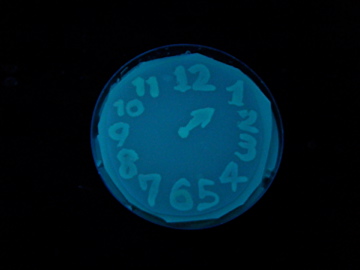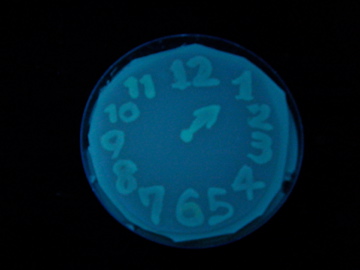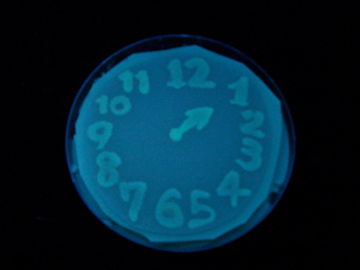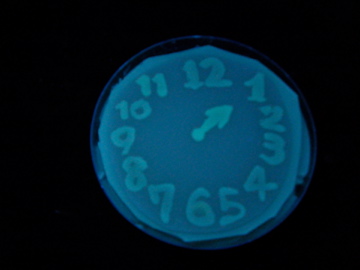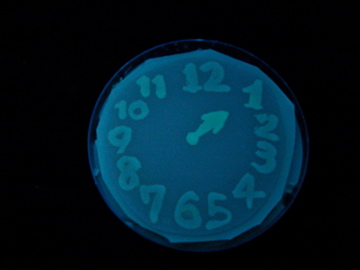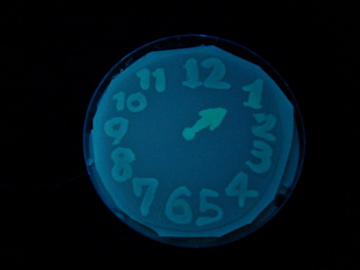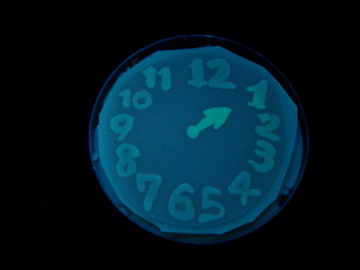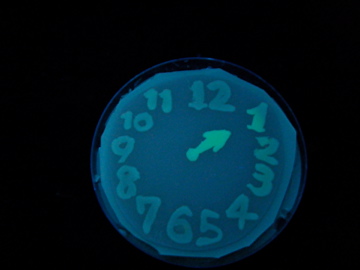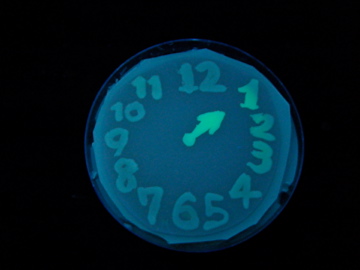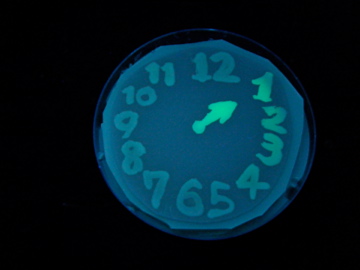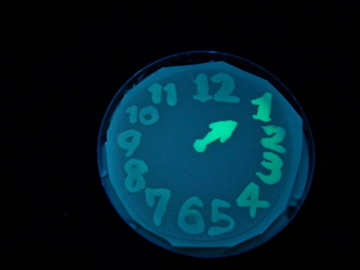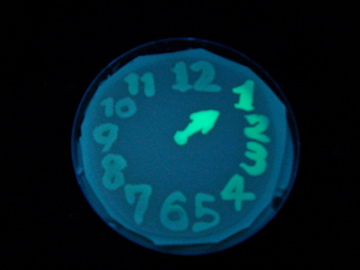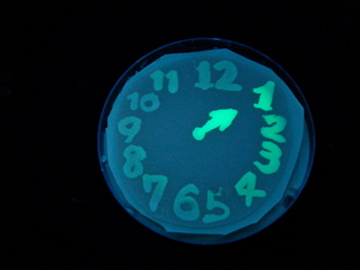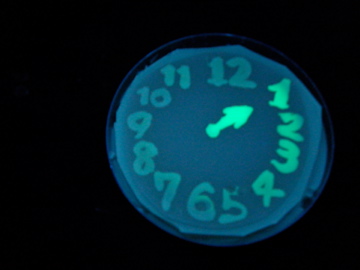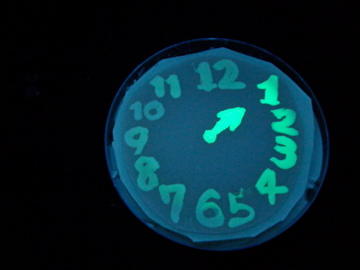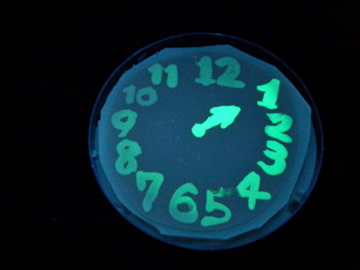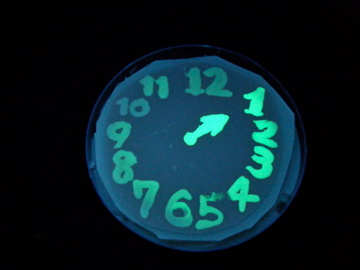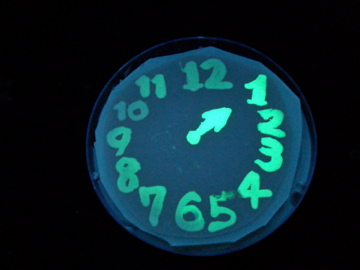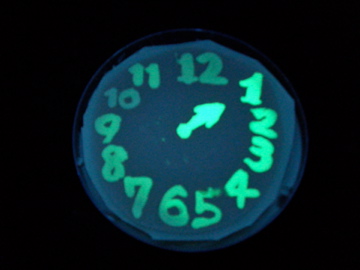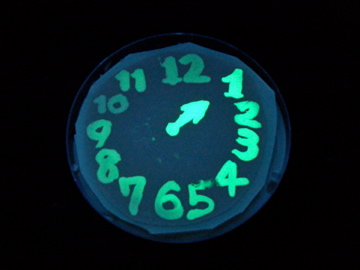|
|
Introduction
Implementing a "Timer" Function!
- Our project is to make a sort of "timer", where gene activation is triggered after a certain time.
- Our approach to this goal is to create a series of transcription factors (TFs) that can be activated by the same inducer molecule but with a different sensitivity. In an environment where the inducer concentration gradually levels up, these TFs switches on one by one according to the order of sensitivity.
- We believe such collection of such TF variants would be useful for the timing control in biological function at will, and thereby contribute to the synthetic biology & iGEM community.
- Using a set of TF variants, we aimed to draw an "animated picture": a picture that pop up one by one.
|
|
Project Design
(手術予定)
2) Project Design
⑤Receiver側のAHL通信の仕組みを図説する。(1,AHLが入るところ(培地調節) 2,Receiver中のLuxR 3,Receiver中のReporter)
Team:Chiba/Project/Signaling-system
Experiments, Results & Discussion
Experiments
- 下の絵すこし汚いですね:jpgじゃない?pngとかgifで保存すればもっと絵が綺麗になるはず
- Mutants個性の絵ができしだい、なおします--Yoshimi 09:00, 21 October 2009 (UTC)
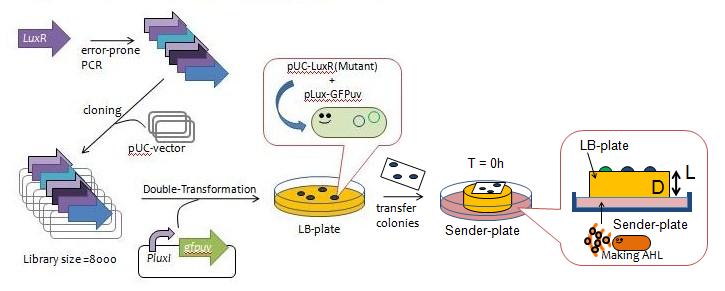 Fig. Y Directed evolution to get some delayed-LuxR mutants - error-prone PCRでLuxRの変異ライブラリを作製し,発現ベクターに組み込んだ
- これを,E.coli BW(?) harboring plux-gfpに形質転換し,コロニーを形成させた。
- コロニーをニトロセルロース膜でリフトし,AHL入りのプレートにのせ,gfpの蛍光の経時変化をみた(Fig. X)。
- 蛍光しはじめるのが遅いものを13個pickし,delayed-LuxR変異体を得た。
- pickした13個のクローンの転写活性化速度?を,再度transformして確認し,最終的に○個の速度バリエーションのluxR変異体を得た。
 Fig. X LuxRライブラリ?によるのPlux-gfp蛍光経時変化
(手術予定)
⑥Mutantを創る。(Error-proneが良い理由:バリエーションを創りやすい。新たなBiobrick作成方法としてError-prone PCRとスクリーニングをセットにしMutant-Partsの作り方を説明する。)
⑦さらに詳しい実験方法(Biobrickからerror-prone PCRをおこなったことなど)
⑧得られたデーター(なぜ8000のライブラリを、200に絞り、どうやって13sampleを選び出したのか説明)
Characterization of LuxR Mutants
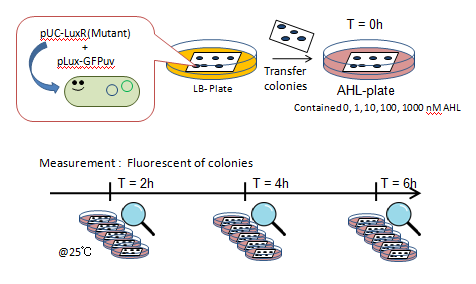 Fig. Characterization of LuxR Mutants
Experiments
- LuxR WT, Mutant(13種)とpLux-GFPのプラスミドが2つトランスフォーメーションされたJW1226株を12h@37℃液体培養。
- Cultureを48ピンでNCフィルタへ植菌し、フィルタを固体培地にのせて12h@37℃で培養。
- AHLの濃度を0, 1, 10, 100, 1000 nMでふった固体培地に、NCフィルタを移動。
- この時を測定開始点とし、30分毎に4時間蛍光の上がり方を目視で確認。
- UVの波長かく!--Yoshimi 08:57, 21 October 2009 (UTC)
- フナコシのUVGL-58のlong waveは365 nmです--Masahiro 14:18, 21 October 2009 (UTC)
100 nM培地での応答の遅れについての結果
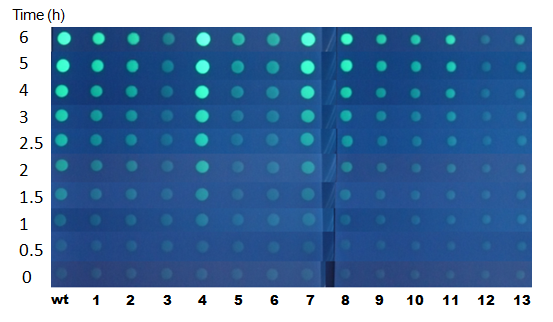 Fig.時間依存
AHL濃度を振った場合の、6h後の蛍光強度の差についての結果
 Fig.濃度依存
LuxR Mutantの個性と、変位が入っている部分からの考察
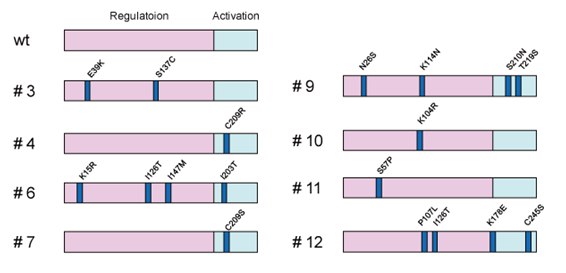 Fig.  Fig. - 下のFigだけで十分かも。。。です。とりあえず後ほど下のFigをもちょっと大きくします--Yoshimi 12:16, 21 October 2009 (UTC)
Demonstration
⑯E. coli Timer完成デモ
- あげてます。--Kaoru
- 写真そろい次第動画にします!--Yoshimi 16:17, 21 October 2009 (UTC)
For the determination of best condition for E coli painting, Click here!
Conclusions
- By using error-prone PCR, we have created a LuxR library.
- With a simple and convenient screening method, we have isolated various LuxR mutants which confer delayed switching behavior in GFP signals.
- By introducing these LuxR variants together with reporter genes (such as GFP) under the control of Lux promoter, we created bacteria 'ink's that develop their color with unique delay-time.
- We conducted painting with these bacteria inks thereby created animated pictures.
- Characterization of LuxR mutants is ongoing. But our preliminary data showed that some of the variants turned out to be the one with less sensitivity to AHLs, and others seemed to be as sensitive as wild-type LuxR but seemed less efficient somewhere in the downstream process.
- We created variety of Biobricks during the course of this projects. Some of them are characterized and sent to the HQ, and many more are almost ready for shipping!
|
 "
"








